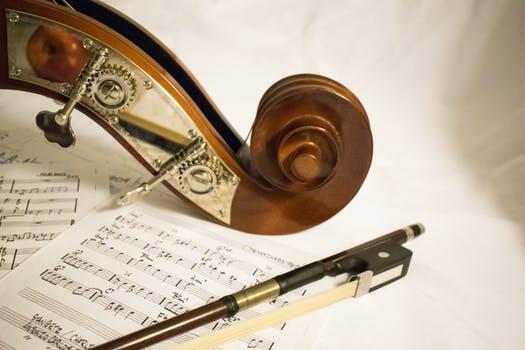
Exploring the Diversity of Instruments in Band & Orchestra
The world of band & orchestra instruments is vast and diverse, offering a rich tapestry of sounds and textures. Are you a budding musician or an avid listener? Understanding these instruments can greatly enhance your appreciation of music.
In this post, we’ll explore the different types of instruments in bands and orchestras. Read on and discover their unique features and how they contribute to the overall sound.
The Heart of the Orchestra
At the center of any orchestra lies a group of instruments that form its core. These instruments provide the foundational sounds upon which other instruments build.
Strings
String instruments are the backbone of the orchestra. They include violins, violas, cellos, and double basses. Violins, with their high-pitched, bright sound, often lead the melody.
Violas, slightly larger than violins, add depth with their rich tones. Cellos produce warm, resonant sounds, while double basses offer the lowest pitches, adding a profound bass element.
Brass
Brass instruments add power and brilliance to the orchestra. Trumpets, with their piercing sound, often play fanfares and heroic melodies.
Trombones provide a robust and rich tone, while tubas, with their deep and powerful sounds, form the foundation of the brass section. Horns, also known as French horns, have a unique, mellow sound that blends well with both brass and woodwinds.
Woodwinds
Woodwind instruments bring a variety of colors to the orchestra. Flutes, with their light and airy sound, often play the melody.
Clarinets have a versatile range, from deep and rich to bright and piercing. Oboes, with their distinct nasal tone, add a unique flavor, while bassoons, with their deep and reedy sound, provide the bass in the woodwind section.
Percussion
Percussion instruments drive the rhythm and add excitement. This section includes drums, cymbals, xylophones, and more. Each instrument has a unique role, from maintaining the tempo to adding dramatic effects.
The Band Setting
Bands, often found in schools and communities, share many instruments with orchestras but have some key differences.
Wind Instruments
In bands, wind instruments take center stage. This category includes brass and woodwind instruments, each contributing to the overall sound.
Saxophones, not typically found in orchestras, are a staple in bands. They come in various sizes, from the high-pitched soprano saxophone to the deep baritone saxophone.
Percussion in Bands
Percussion instruments in bands are similar to those in orchestras but often include additional elements like marching drums and other portable instruments. The drumline is crucial in marching bands, providing both rhythm and visual spectacle.
The Unique Role of French Horns
French horns, often simply called horns, hold a special place in both bands and orchestras. Their unique shape and sound make them versatile and essential.
The Sound of the French Horn
The French horn produces a mellow, rounded tone that can blend seamlessly with both brass and woodwind sections. Its range allows it to play both high and low parts, making it incredibly versatile.
Historical Significance
The French horn has a rich history, originally used in hunting and later adapted for orchestras. Its design has evolved, but its distinctive sound remains a constant.
Modern Use
Today, the French horn is used in various genres, from classical to film scores. Its ability to convey emotion makes it a favorite among composers and arrangers.
How Instruments Work Together
In both bands and orchestras, the collaboration of various instruments creates a rich, layered sound. Each instrument plays a unique role, contributing to the overall harmony.
Creating Harmony
Harmony is achieved when different instruments play complementary notes. This can create a full, lush sound that enhances the melody. String sections often play harmonies, providing a beautiful backdrop for the lead instruments.
Building Texture
Texture in music refers to how the melodic, rhythmic, and harmonic elements are combined. Different instruments add layers of texture, creating a more complex and interesting piece. For example, woodwinds might add light, airy textures, while brass instruments provide a bold, powerful layer.
Dynamic Range
The dynamic range of an ensemble refers to the variance in volume levels. Brass instruments can produce powerful, loud sounds, while woodwinds and strings can play soft, delicate passages. This range adds to the emotional impact of the music.
The Evolution of Instruments
Over time, musical instruments have evolved, leading to the rich diversity we see today.
Historical Development
Many instruments have ancient origins, evolving through centuries of innovation. For instance, the modern violin has roots tracing back to the Renaissance period, with significant developments occurring in the Baroque era.
Technological Advancements
Technological advancements have also played a role in the evolution of instruments. The development of valves in brass instruments, for example, allowed for greater precision and versatility. Electronic instruments have also emerged, expanding the possibilities of music.
Cultural Influences
Cultural influences have shaped the design and use of instruments. Different regions have developed unique instruments and playing techniques, contributing to the global tapestry of music. For example, the sitar from India and the djembe from Africa have distinct sounds and playing styles.
Choosing an Instrument
For aspiring musicians, choosing the right instrument is a significant decision.
Personal Preference
Personal preference plays a big role in choosing an instrument. Some may be drawn to the bright, cheerful sound of the trumpet, while others may prefer the deep, resonant tones of the cello. Listening to different instruments can help you make a choice.
Physical Considerations
Physical considerations are also important. Some musical instruments require more physical strength or breath control. For example, playing the tuba requires good lung capacity, while the violin demands precise finger movements.
Availability and Resources
The availability of instruments and resources for learning can influence the decision. Some instruments may be more accessible or have more learning resources available, making it easier for beginners to start.
Discover The Diversity of Instruments in Band & Orchestra
Exploring the world of band & orchestra instruments opens up a wealth of musical experiences. Each instrument, with its unique sound and role, adds to the rich tapestry of music. Whether you are a musician or a listener, understanding these instruments can deepen your appreciation of music.
Choosing the right band equipment depends on personal preference, physical considerations, and available resources. No matter your choice, each instrument offers a unique journey into the world of music.
For more enriching articles on a wide range of topics, don’t forget to explore our blog. Happy reading!








